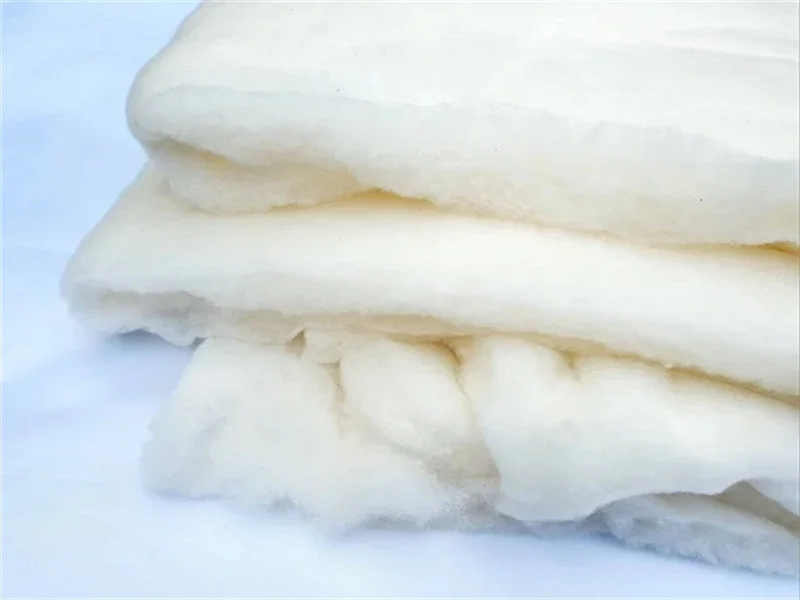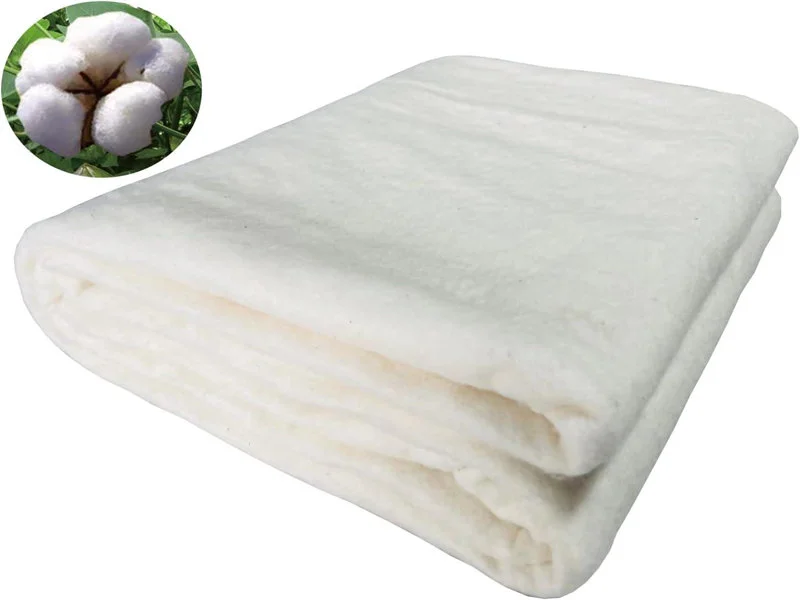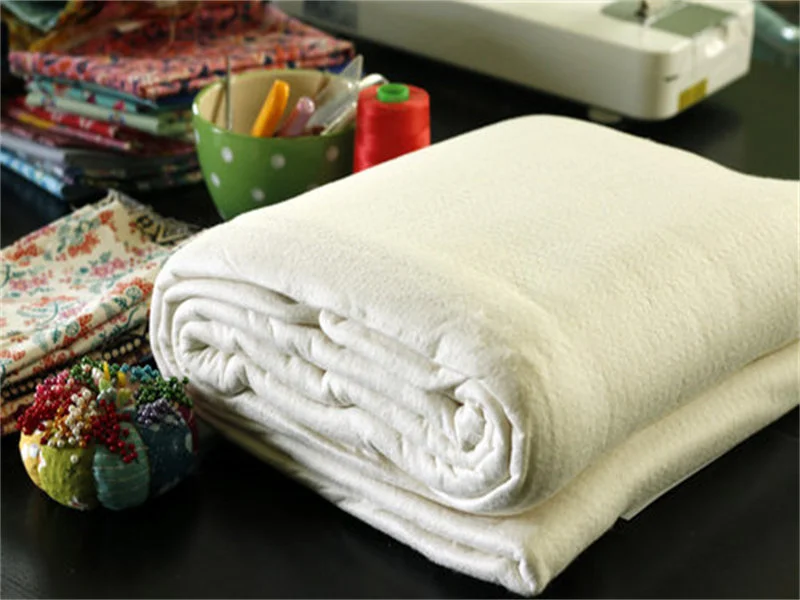So, what is cotton batting? You’ll find this soft, fluffy layer tucked inside quilts, jackets, and plenty of craft projects. Batting fabric like this gives your creations warmth, shape, and a cozy feel. Many DIYers love cotton batting because it’s easy to work with and suits a range of projects.
Wondering about the uses of cotton batting? You’ll see it in quilting, clothing, and crafts everywhere. Brands like F&A make batting fabric that stands out for quality and reliability, which matters when you want your finished piece to last.
The popularity of batting keeps growing, with cotton batting covering about 40% of the market.

Choosing the right batting fabric sets your project up for success. You’ll notice the difference in the final result.
Key Takeaways
- Cotton batting is a soft, natural layer made from cotton fibers that adds warmth and shape to quilts, clothing, and crafts.
- It is breathable, easy to handle, and eco-friendly, making it a popular choice for projects that touch your skin.
- Choosing the right loft and weight of cotton batting helps you achieve the look and comfort you want, from flat vintage quilts to warm, puffy blankets.
- Handle cotton batting gently by laying it flat before cutting and pinning carefully to avoid shifting; testing a small sample helps ensure the best results.
- Wash finished projects gently to preserve the batting’s softness and character, and store extra batting in a cool, dry place to keep it fresh.
What Is Cotton Batting?

Definition
If you’ve ever wondered what is cotton batting, you’re not alone. You see this material in so many projects, but what is cotton batting exactly? It’s a soft, fluffy sheet made from natural cotton fibers.
You’ll find it sandwiched between layers of fabric in quilts, jackets, and even craft projects. This batting fabric gives your creations warmth, shape, and a cozy feel.
Cotton batting stands out because it’s made from pure cotton. That means you get a natural, breathable layer that feels gentle against your skin. Many crafters and quilters love using this batting fabric because it’s easy to handle and doesn’t shift around much inside your project.
You can use it for hand quilting or machine quilting, and it works well for both.
Here’s a quick look at the main features and uses of cotton batting:
| Aspect | Details |
|---|---|
| Material Composition | Made from natural cotton fibers |
| Physical Properties | Soft, breathable, low loft (thin and flat), stable (does not shift or bunch easily) |
| Care Instructions | Machine washable and dryable with care to minimize shrinkage (3-5% shrinkage typical) |
| Appearance | Off-white or cream color, soft and fibrous texture, available in various thicknesses |
| Typical Uses | Quilts, padded clothing, home decor, craft projects, baby items, pet bedding |
| Key Benefits | Insulation, comfort, durability, aesthetic enhancement |
| Additional Notes | Shrinkage can create a puckered vintage look, suitable for hand and machine quilting |
You might notice that cotton batting has a flatter look than some other types. That’s because it has less loft, which means it’s not as puffy. This makes it easier for you to sew and quilt, especially if you want a classic, vintage style.
Tip: If you want your quilt to have that old-fashioned, puckered look, cotton batting is a great choice. The slight shrinkage after washing gives your project extra character.
How It’s Made?
Let’s talk about how cotton batting comes to life. The process starts with raw cotton. Factories clean and card the cotton fibers, making sure they’re soft and free from debris. Then, machines layer the fibers into thin sheets. These sheets get pressed and sometimes lightly stitched or bonded to hold everything together.
When you pick up batting fabric from a trusted brand like F&A, you know you’re getting quality. F&A uses advanced technology and strict quality checks to make sure every roll of cotton batting meets high standards. Their process includes:
- Using natural cotton fibers for softness and breathability.
- Pre-treat the batting fabric to reduce shrinkage and improve durability.
- Offering different thicknesses so you can choose the right loft for your project.
You might wonder why so many people choose cotton batting over other types. Here are a few reasons:
- Cotton batting is eco-friendly and biodegradable. It often comes from recycled textiles, which helps reduce waste.
- This batting fabric doesn’t irritate your skin or cause allergies, unlike some synthetic options.
- Cotton batting offers great soundproofing and insulation, making it perfect for cozy quilts and padded clothing.
- You can wash and dry it at home, but remember to follow care instructions to keep shrinkage to a minimum.
If you’re looking for batting that’s easy to work with, safe for your family, and kind to the environment, cotton batting is a smart pick. You’ll find it in everything from baby quilts to home décor, and it always delivers comfort and quality.
- Cotton batting gives you a natural, breathable layer for your projects.
- Batting fabric from brands like F&A combines tradition with modern innovation.
- You can rely on cotton batting for warmth, softness, and long-lasting results.
So, next time you ask yourself what cotton batting is, you’ll know it’s the heart of many cozy, beautiful creations.
Cotton Batting Features
Material & Texture
When you touch cotton batting, you’ll notice how soft and gentle it feels. This batting fabric uses natural cotton fibers, which give it a smooth, plush texture. You can count on it to feel comfortable against your skin, making it perfect for quilts, clothing, and crafts.
F&A takes pride in using high-quality cotton and advanced processes to create batting that feels luxurious and stays strong. Their eco-friendly approach means you get a product that’s both soft and sustainable.
Note: Natural fibers in cotton batting help your projects stay breathable and cozy, while also being kind to the environment.
Loft & Weight
Loft and weight are two important characteristics of cotton batting. Loft means how thick and fluffy the batting is, while weight tells you how dense it feels. If you want a quilt that’s warm and puffy, you might pick a higher loft. For a flatter, vintage look, a lower loft works best.
Industry experts say that the weight of batting affects how warm and drapey your quilt will be, and the loft changes the texture and feel. F&A offers batting fabric in different lofts and weights, so you can choose what fits your project.
Here’s a quick table to help you compare:
| Loft Type | Weight | Best For |
|---|---|---|
| Low Loft | Lighter | Flat quilts, clothing |
| Medium Loft | Medium | Everyday quilts |
| High Loft | Heavier | Puffy, warm blankets |
You get to decide what works for your style and comfort.
Breathability & Shrinkage
Cotton batting stands out for its breathability. You’ll notice that air passes through the batting fabric easily, which keeps your projects from feeling stuffy. Researchers have tested cotton fabrics and found that even when layered or damp, cotton batting keeps its breathability and filtration ability.
Washing your batting fabric may cause a little shrinkage, but this often adds a charming, puckered look to quilts. F&A pre-treats their batting to help control shrinkage, so you get reliable results every time.
- Cotton batting stays breathable, even with layers.
- Washing causes minor shrinkage, giving quilts a vintage feel.
- Moisture has little effect on breathability or filtration.
If you want batting that’s soft, durable, and eco-friendly, cotton batting from F&A checks all the boxes. You’ll love how these characteristics of cotton batting make your projects look and feel.
Quilt Batting vs Other Types
Cotton vs Polyester
When you look at different types of batting, you’ll notice that cotton batting and polyester batting are the most popular choices. Cotton batting feels soft and natural. It breathes well and gives your quilts a classic, flat look.
Polyester batting, on the other hand, feels lighter and puffier. It holds its shape and resists shrinking, which makes it great for projects that need extra loft.
Here’s a quick comparison to help you decide:
| Feature | Cotton Batting | Polyester Batting |
|---|---|---|
| Feel | Soft, natural | Smooth, synthetic |
| Loft | Low to medium | Medium to high |
| Breathability | Excellent | Moderate |
| Shrinkage | 3-5% (adds texture) | Minimal |
| Eco-Friendly | Yes | No |
Tip: If you want a quilt that feels cozy and natural, cotton batting is a great pick. For a fluffier look, try polyester.
Cotton vs Wool & Blends
You’ll find other types of batting fabric, like wool and blends. Wool batting feels warm and springy. It insulates well and adds a bit of bounce to your quilt.
Blended batting combines fibers, like cotton and polyester, to balance softness, warmth, and durability. These types of batting can work for many projects, but each has its own feel.
- Wool batting: Warm, bouncy, great for winter quilts.
- Blends: Mix the best features of different fibers.
- Cotton batting: Soft, breathable, easy to handle.
When to Choose Cotton?
You might wonder when to choose cotton batting over other types of batting. Cotton batting works best when you want a natural, breathable layer. It’s perfect for quilts, clothing, and crafts that touch your skin.
If you love a vintage look or want your quilt batting to shrink a little for texture, cotton is the way to go.
Choose cotton batting if you:
- Want a soft, classic finish?
- Care about eco-friendly materials.
- Need batting that’s easy to sew and handle.
With so many types of batting available, you can always find the right fit for your project. Cotton batting stands out for its comfort and versatility, making it a favorite among quilters and crafters.
Using Cotton Batting

Batting Fabric Selection
Choosing the right batting fabric can make or break your project. You want to think about the look, feel, and purpose of your finished piece. If you’re making a lightweight summer quilt, you might pick a low-loft cotton batting. For a cozy winter blanket, a higher loft gives extra warmth.
Many crafters experiment with different batting fabrics, even layering threads or adding beads for texture and light effects. Sometimes, traditional batting fabric doesn’t fit creative ideas, so don’t be afraid to try new combinations.
F&A’s custom fabric service lets you design unique batting fabric for special projects, whether you’re making a baby quilt, a jacket, or a decorative wall hanging.
Tip: Always match your batting fabric to your project’s needs. Test a small sample before you commit.
Handling & Cutting
Handling batting fabric takes a gentle touch. Lay your batting flat before cutting to avoid stretching or bunching. Use sharp scissors or a rotary cutter for clean edges. Pin or baste your batting fabric carefully to keep layers from shifting.
Some quilters like to test their batting by making a sample block, quilting it, and washing it to see how it shrinks and feels. Pre-shrinking cotton batting is optional, but skipping it gives your quilt a charming, crinkly look.
If you use spray basting, go easy on the chemicals. Try fusible batting fabric for extra stability and easier handling.
- Lay batting fabric flat before cutting.
- Pin and baste with care.
- Test a sample block for softness and shrinkage.
Care & Maintenance

Taking care of your batting fabric helps your projects last. Wash your finished quilt or garment gently in cold water. Use mild detergent and avoid harsh chemicals. Cotton batting usually shrinks a little, which adds character to your quilt.
Dry on low heat or air dry to protect the batting fabric. Store extra batting fabric in a cool, dry place away from sunlight. If you have leftover pieces, use them for smaller crafts or patchwork.
Note: F&A’s batting fabric comes pre-treated to reduce shrinkage and boost durability, so you get reliable results every time.
Conclusion
You now know why cotton batting is a favorite for so many projects. It gives you warmth, softness, and a natural feel. When you pick batting, think about loft, weight, and breathability. Here’s a quick checklist:
- Choose batting that matches your project’s needs.
- Test a small piece before starting.
- Handle and store batting with care.
- Wash gently to keep the cotton batting looking great.
Want the best results? Try F&A’s quality batting for your next DIY adventure. You can create something amazing!
FAQ
How do you store leftover cotton batting?
Keep your batting in a cool, dry spot. Fold it neatly or roll it up. Use a storage bin or bag to protect it from dust and sunlight. This helps your batting stay fresh and ready for your next project.
Can you wash cotton batting before using it?
You can pre-wash cotton batting if you want to reduce shrinkage. Some quilters skip this step for a crinkly, vintage look. Always check the care label. F&A’s batting comes pre-treated, so you get reliable results right out of the package.
What projects work best with cotton batting?
Cotton batting shines in quilts, padded clothing, baby blankets, and craft projects. You can also use it for home décor, like table runners or wall hangings. Its softness and breathability make it a favorite for anything that touches your skin.
Does cotton batting cause allergies?
Cotton batting uses natural fibers, so it rarely causes allergies. You can use it for baby items or sensitive skin projects. If you have concerns, test a small piece first. F&A’s batting is gentle and safe for most users.
